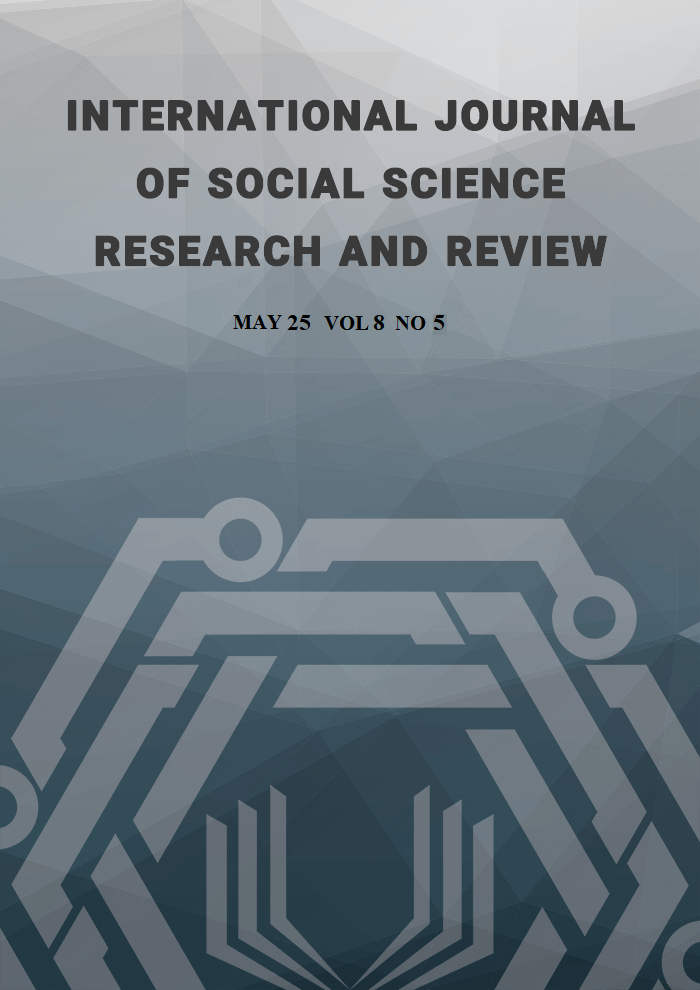Assessment of the Economic Significance of Gold: A Reappraisal of the Ilesha Schist Belt, Southwestern Nigeria
Abstract
Nigeria, endowed with significant gold deposits, holds substantial economic potential, particularly in the northwest and southwest regions within the Schist Belts. In the Iperindo axis of the Ilesha Schist Belt, artisanal mining has been reported; however, the lack of comprehensive geoscience data hinders optimal resource development. This study evaluates the economic viability of gold occurrences in the area, leveraging geoscience research findings. To assess gold mineralization potential, Geonics EM34-3 and SuperSting R8/IP/SP meters were used for frequency domain electromagnetic (FDEM) and electrical resistivity tomography (ERT) profiling, alongside geochemical sampling of soil and stream sediments. Apparent resistivity data from ERT profiles were inverted using RES2DINV software, while Oasis Montaj was utilized to generate 2D conductivity/resistivity sections, maps, and 3D subsurface models. The results suggest the presence of gold or base metals in pegmatitic veins within low-resistivity, high-conductivity zones. Additionally, processed geochemical data identified areas with substantial mineralization potential. These findings underscore the economic potential for commercial gold exploitation in the Ilesha Schist Belt. Instead of further expanding artisanal mining, structured commercial development could enable the government to collect royalty taxes, create employment opportunities, and foster economic growth for both the local community and the nation.
References
Griffiths, D.H., Turnbull, J. and Olayinka, A.I. (1990). Two-Dimensional Resistivity Mapping with a Computer-Controlled Array. First Break, 8, 121-129. https://doi.org/10.3997/1365-2397.1990008.
Kearey, P., Brooks, M., & Hill, I. (2002). An introduction to geophysical exploration (3rd ed.). Blackwell Science Ltd.
Loke M.H. and Barker, R.D. (1996). Rapid Least-Squares Inversion of Apparent Resistivity Pseudosections by a Quasi-Newton Method. Geophysical Prospecting, 44, 131-152. https://doi.org/10.1111/j.1365-2478.1996.tb00142.x.
Nigerian Geological Survey Agency (NGSA). (2009). Lineament and Geological Map of Nigeria (Scale 1:100,000).
Osinowo, O.O., Usman, A.K. and Omitoogun, A.A. (2020). Application of Electrical Resistivity Tomography for Mapping Gold Mineralization Potential in Iperindo, Ilesha schist belt, southwestern Nigeria. International Journal of Advanced Geosciences, 8(2), 146-152.
Telford, W. M., Geldart, L. P., & Sheriff, R. E. (1990). Applied geophysics (2nd ed.). Cambridge University Press.
Usman, A. K. (2019). Integrated geophysical and geochemical exploration for gold deposit in part of Ilesha Schist Belt, southwestern Nigeria [Master’s thesis, Pan African University Institute of Life and Earth Sciences (PAULESI), University of Ibadan.
Usman, A. K., Osinowo, O. O., Abdulrasheed, S. O. and Usman, Q. T. (2020). Geochemical Characterization of gold and Associated elements in Iperindo, Ilesha Schis Belt, Southwestern Nigeria. Proceedings of the Nigerian International Materials Congress (NIMACON). Vol.1. Pg. 115-118. ISBN 978-060-609-21.
Usman, A. K., Osinowo, O. O., Raimi, J. and Onuh E. (2021). Application of Frequency Domain Electromagnetic for mapping gold mineralization potential in Iperindo, Ilesha schist belt, southwest Nigeria. Proceedings of the School of Physical Sciences Biennial International Conference (SPSBIC). Pg. 180-188.
Usman, A. K., Abdulrasheed, S. O., Hassan, Y. A., Onuh, E. and Aliyu, Y. (2023). A Review of Economic Importance and Viability of Gold: A Case Study of Ilesha Schist Belt, Southwestern Nigeria. Proceedings of the 13th International Conference on Agriculture, Animal Science and Rural Development. Pg. 510-520. ISBN: 978-1-955094-66-5.

This work is licensed under a Creative Commons Attribution-NonCommercial-NoDerivatives 4.0 International License.
Copyright for this article is retained by the author(s), with first publication rights granted to the journal. This is an open-access article distributed under the terms and conditions of the Creative Commons Attribution license (https://creativecommons.org/licenses/by-nc-nd/4.0/).





